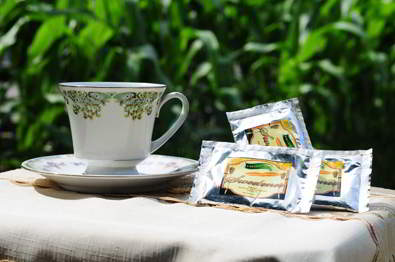
 Santol is a tropical fruit native to the regions of Indochina. Along with other South East Asian countries, it was introduced and naturalized in the Philippines hundreds of years ago. Most people refer to it as ‘santol’, ‘wild mangosteen’, or in most English countries, as the ‘lolly fruit’ because you literally have to suck the seeds to get its essence. Aside from the fact that it is commonly tagged as a shade tree in our country, santol provides other uses and benefits that we don’t consider of high importance.There are numerous reasons why we should start putting santol into the limelight, and not merely look at it as underutilized, traditional, or simply just a promising fruit.Low farming maintenance. As it is known to most of us, the santol tree is found throughout the country. It can be planted under a wide range of soil types and flourishes in both dry and humid areas of Philippine lowlands. Santol can be grown in the backyards of our homes, and it is guaranteed to mature even with a minimum of management. It is only for commercial planting and fruit grade that a santol tree must be planted such that distance to other trees is considered and given its proper nourishment to hasten its growth. For maximum yield, it requires fertilization twice a year. It is easily reproduced by various means - seeds, air-layering, inarching, or by budding onto -rootstocks. Harvesting is usually done with the bare hands or by using a long stick with a forked end. Generally, the cultivation of santol is not as demanding as other fruit-bearing tropical trees can be.Santol is a very productive tree. Normally, seed trees produce fruits five to seven years after planting. Described as a hardy tree of vigorous and rapid growth, a santol tree thrives well even where the dry season is prolonged. Truly productive, a full grown tree can be relied on to produce around 18,000 to 24,000 fruits every year. In fact, huge quantities rot on the ground annually because of such copiousness.Packed with good nutrition. Like most other tropical fruit, santol contains vitamins and minerals that boost our body’s immunity. It is rich in Vitamins B and C, which, respectively, promotes proper cell metabolism, and strengthens and protects the immune system against cardiovascular diseases. It also contains fair amounts of carbohydrates, iron, fiber, and phosphorus. Chewing santol also contributes to healthier teeth as it stimulates the production of saliva and lowers the levels of bacteria, thus reducing tooth decay.Has anti-allergy properties. Imagine the convenience of having an anti-allergy food right in the comfort of our own backyards? The pulp of the santol fruit is rich in bryonolic and sandorinic acids which are known to have anti-allergy properties. These acids are produced through cultures of santol plant cells. With further studies and development of clinical processes and protocols, santol can be established as a remedy for certain allergies.An all-natural souring agent. Sinigang is one Filipino dish that we all love. Nowadays, santol has become a favorite souring ingredient. It surely gives a healthy, luscious, salivating sour taste perfect for sinigang dishes!Jams and jellies, anyone? Santol fruit (with seeds removed) and rind is perfect for making candies, jams, jellies. Santol also makes a good preserve. Here in the Philippines, the fruits are peeled by removing the seeds and boiling the rind with sugar, preserved in syrup, and processed into marmalades for export. According to some Filipino entrepreneurs, such products are a favorite in Europe and the United States.A ringworm counter agent. The bitter bark of the santol tree which contains a slightly toxic alkaloid and a steroidal sapogenin, has a good reputation for the treatment of ringworm, a common fungal infection of the skin. The bark is powdered and applied to the affected skin. This might be considered traditional especially in Philippine rural cultures but it has scientific backing. Steroidal sapogenins from santol, can be chemically synthesized into cortisones, a known substance for the treatment of skin diseases.Bottoms-Up! Ever heard of Santol wine? With this fruit, nothing is wasted. Overripe santol fruits can be fermented with rice to make an alcoholic drink. It’s healthy, and easy to do.Would a wood…? According to J.F. Morton, author of the book, “Fruits of Warm Climates,” the wood of the santol tree can also be used for construction. It is fairly hard, moderately heavy, close-grained and polishes well. However it is not always of good quality. It is not durable when moist and is subject to borers. But since it is plentiful, easy to work with, and very popular that, as Morton stated, if carefully seasoned the wood can be employed for house posts, interior construction, light framing, barrels, cabinet work, boats, carts, household utensils, carvings, and accents. The bark is also used in tanning fishing lines.Folkloric-but-tried-and-tested medicinal uses. Interestingly, the aromatic, astringent root serves as a tonic for women after childbirth. The roots may be boiled and made into a tea to help ease diarrhea and dysentery. It may also be mixed with vinegar and water to relieve other intestinal problems. Leaf decoction is used to bathe patients with fever, causing sweating thus reducing fever.…and just by being the santol fruit that it is…Apart from all of the many things we get from santol, Filipinos will always include this in their fruit basket. Santol can be a snack by itself because the fruit can be eaten as it is. Dipped in salt or vinegar, this mouth-watering fruit will always be among the well-loved fruits in the Philippines, thus assuring a big, constant market.Realizing the many uses and benefits from a certain produce is the first step in regarding it as an important crop or fruit. Consequently, researchers, agriculturists, scientists, policy makers, and extensionists will pay attention to such a crop and will begin to build ways to harness its potentials, create strategies, and establish policies in the sustained development. This can be the case not only of santol, but all the other crops that receive little or no attention at all.It is comforting to know that in the field of agriculture, concerned agencies—especially the Department of Agriculture—are initiating efforts to reach out to the masses, first and foremost, reacquainting them on our abundant but mostly ignored local food resources. Promoting Pinoy fruits can be a big leap benefitting the fruit industry which can contribute to assuring food security and improved incomes for the Filipino farmer.There is still so much to improve in santol: from cultivation, production and by-product development , harvesting and post-harvesting, marketing, to policy recommendations. With continued efforts and coordination among concerned agencies, the development of the underutilized fruits can contribute significantly to the attainment of the Department’s vision on Philippine Food Security. ###---------
Santol is a tropical fruit native to the regions of Indochina. Along with other South East Asian countries, it was introduced and naturalized in the Philippines hundreds of years ago. Most people refer to it as ‘santol’, ‘wild mangosteen’, or in most English countries, as the ‘lolly fruit’ because you literally have to suck the seeds to get its essence. Aside from the fact that it is commonly tagged as a shade tree in our country, santol provides other uses and benefits that we don’t consider of high importance.There are numerous reasons why we should start putting santol into the limelight, and not merely look at it as underutilized, traditional, or simply just a promising fruit.Low farming maintenance. As it is known to most of us, the santol tree is found throughout the country. It can be planted under a wide range of soil types and flourishes in both dry and humid areas of Philippine lowlands. Santol can be grown in the backyards of our homes, and it is guaranteed to mature even with a minimum of management. It is only for commercial planting and fruit grade that a santol tree must be planted such that distance to other trees is considered and given its proper nourishment to hasten its growth. For maximum yield, it requires fertilization twice a year. It is easily reproduced by various means - seeds, air-layering, inarching, or by budding onto -rootstocks. Harvesting is usually done with the bare hands or by using a long stick with a forked end. Generally, the cultivation of santol is not as demanding as other fruit-bearing tropical trees can be.Santol is a very productive tree. Normally, seed trees produce fruits five to seven years after planting. Described as a hardy tree of vigorous and rapid growth, a santol tree thrives well even where the dry season is prolonged. Truly productive, a full grown tree can be relied on to produce around 18,000 to 24,000 fruits every year. In fact, huge quantities rot on the ground annually because of such copiousness.Packed with good nutrition. Like most other tropical fruit, santol contains vitamins and minerals that boost our body’s immunity. It is rich in Vitamins B and C, which, respectively, promotes proper cell metabolism, and strengthens and protects the immune system against cardiovascular diseases. It also contains fair amounts of carbohydrates, iron, fiber, and phosphorus. Chewing santol also contributes to healthier teeth as it stimulates the production of saliva and lowers the levels of bacteria, thus reducing tooth decay.Has anti-allergy properties. Imagine the convenience of having an anti-allergy food right in the comfort of our own backyards? The pulp of the santol fruit is rich in bryonolic and sandorinic acids which are known to have anti-allergy properties. These acids are produced through cultures of santol plant cells. With further studies and development of clinical processes and protocols, santol can be established as a remedy for certain allergies.An all-natural souring agent. Sinigang is one Filipino dish that we all love. Nowadays, santol has become a favorite souring ingredient. It surely gives a healthy, luscious, salivating sour taste perfect for sinigang dishes!Jams and jellies, anyone? Santol fruit (with seeds removed) and rind is perfect for making candies, jams, jellies. Santol also makes a good preserve. Here in the Philippines, the fruits are peeled by removing the seeds and boiling the rind with sugar, preserved in syrup, and processed into marmalades for export. According to some Filipino entrepreneurs, such products are a favorite in Europe and the United States.A ringworm counter agent. The bitter bark of the santol tree which contains a slightly toxic alkaloid and a steroidal sapogenin, has a good reputation for the treatment of ringworm, a common fungal infection of the skin. The bark is powdered and applied to the affected skin. This might be considered traditional especially in Philippine rural cultures but it has scientific backing. Steroidal sapogenins from santol, can be chemically synthesized into cortisones, a known substance for the treatment of skin diseases.Bottoms-Up! Ever heard of Santol wine? With this fruit, nothing is wasted. Overripe santol fruits can be fermented with rice to make an alcoholic drink. It’s healthy, and easy to do.Would a wood…? According to J.F. Morton, author of the book, “Fruits of Warm Climates,” the wood of the santol tree can also be used for construction. It is fairly hard, moderately heavy, close-grained and polishes well. However it is not always of good quality. It is not durable when moist and is subject to borers. But since it is plentiful, easy to work with, and very popular that, as Morton stated, if carefully seasoned the wood can be employed for house posts, interior construction, light framing, barrels, cabinet work, boats, carts, household utensils, carvings, and accents. The bark is also used in tanning fishing lines.Folkloric-but-tried-and-tested medicinal uses. Interestingly, the aromatic, astringent root serves as a tonic for women after childbirth. The roots may be boiled and made into a tea to help ease diarrhea and dysentery. It may also be mixed with vinegar and water to relieve other intestinal problems. Leaf decoction is used to bathe patients with fever, causing sweating thus reducing fever.…and just by being the santol fruit that it is…Apart from all of the many things we get from santol, Filipinos will always include this in their fruit basket. Santol can be a snack by itself because the fruit can be eaten as it is. Dipped in salt or vinegar, this mouth-watering fruit will always be among the well-loved fruits in the Philippines, thus assuring a big, constant market.Realizing the many uses and benefits from a certain produce is the first step in regarding it as an important crop or fruit. Consequently, researchers, agriculturists, scientists, policy makers, and extensionists will pay attention to such a crop and will begin to build ways to harness its potentials, create strategies, and establish policies in the sustained development. This can be the case not only of santol, but all the other crops that receive little or no attention at all.It is comforting to know that in the field of agriculture, concerned agencies—especially the Department of Agriculture—are initiating efforts to reach out to the masses, first and foremost, reacquainting them on our abundant but mostly ignored local food resources. Promoting Pinoy fruits can be a big leap benefitting the fruit industry which can contribute to assuring food security and improved incomes for the Filipino farmer.There is still so much to improve in santol: from cultivation, production and by-product development , harvesting and post-harvesting, marketing, to policy recommendations. With continued efforts and coordination among concerned agencies, the development of the underutilized fruits can contribute significantly to the attainment of the Department’s vision on Philippine Food Security. ###---------Sources: 1. Santol: A closer look at the ‘underdog’ of fruits. The International Tropical Fruits Network. Retrieved from: http://www.itfnet.org/v1/2012/01/santol-a-closer-look-at-the-%E2%80%98underdog%E2%80%99-of-fruits/ 2. The Pharmacological Properties of Terpenoids from Sandoricum Koetjape. Z.D.Nassar, Universiti Sains Malaysia. Retrieved from: http://www.webmedcentral.com/article_view/1311 3. Santol. Sandoricum koetjape Merr. Retrieved from: http://www.stuartxchange.org/Santol.html 4. Medicinal Use of Santol and Its Many Health Benefits. Retrieved from: http://www.all-about-philippine-fruits-and-herbs.com/Medicinal-Use-of-Santol.html 5. Fruits of Warm Climates. Julia F. Morton, Miami, FL. 1987. Santol, p. 199-201. Retrieved from: http://www.hort.purdue.edu/newcrop/morton/santol.html 6. The Sweet and Sour Fruit Called Santol. H.D.Tacio, Agriculture Business Week. Retrieved from: http://www.agribusinessweek.com/this-sweet-and-sour-fruit-called-santol/
By: Daryl Lou A. Battad, BAR Digest October-December 2012 Issue (Vol. 14 No. 4)
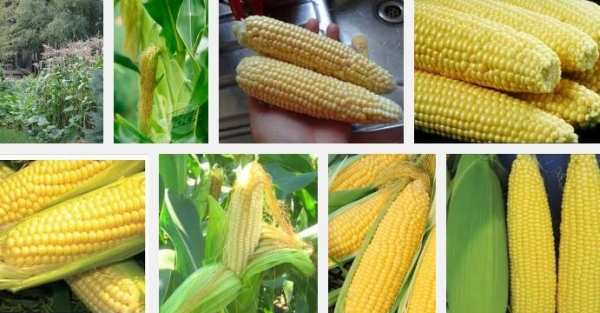 Sweet Corn is monoecious, having male flowers on top of the plant and female flowers (silks) at leaf axis along the main stem. The male flower, called the tassel, can produce up to a million pollen grains. The pollen begins to shed several days before the female silks emerge, but continues to produce pollen and mature for many days. Pollen moves by wind and gravity. It is for this reason that single rows of corn don't usually pollinate and yield as well as many rows side-by-side. The ear, or female flower, is enclosed in several layers of "husk" with only the fine string-like styles or silks emerging above for pollination. The ovaries are produced in rows along the upright axis of the spike or cob. After fertilization they develop into kernels.As the plants are wind pollinated they should be grown in blocks rather than rows, 45cm (18in) apart. Sweet corn can also cross-pollinate with other types of corn. If sweet corn is planted downwind of popcorn or field corn, kernels will be starchy instead of sweet. Cross-pollination between white and yellow cultivars will change the colors of the kernels. Extra-sweet and standard cultivars also should not be planted near each other or at the same time. To prevent cross-pollination problems, sweet corn should be separated from different types of corn by at least 400 yards, different types or cultivars of corn should be planted at least 1 month apart, or cultivars with different maturity dates should be planted.Sweet Corn Production GuideSweet Corn VaritiesThere are many varieties of sweet corn:SE - Sugary Enhancer Hybrids
SH2 - Super Sweet Hybrids
SU - Normal Sugary Hybrids
HeirloomSE, or sugar enhanced hybrids, have the highest sugar content of any sweet corn varieties. They do not need to be isolated from other sweet corn categories when planted in the garden.SH2, or super sweet hybrids, are very sweet and have a crisp texture. They must be planted separate from other corn varieties to prevent cross-pollination.SU, or normal sugar hybrids, have the highest yields. However, they are not quite as sweet or crisp as the SE or SH2 varieties. The flavor and texture is very good. SU varieties are considered the standard of quality among sweet corn varieties. No isolation is needed when planted with other sweet corn varieties.Heirloom sweet corn is known for its full flavor and substantial texture. Some heirloom varieties can be traced back more than 100 years. Heirloom sweet corn should be planted away from other corn varieties to prevent cross pollination.Land PreparationPlowing and Tilling. Prepare the land properly for the ideal growth of the sweet corn seed that you will plant. Good plowing and tilling of the land will help avoid early growth of weeds in your corn farm.For light soil, it is recommended that you plow the land once and till it also once.For clay or heavy soil, it is recommended that you plow the land once and you till it twice with 7-10 days interval for the tilling.Furrowing. On the day of sowing, build furrows with a 70 centimeter distance from each other and a depth of 8 centimeters for wet season or 10 centimeters for dry season.Growing ConditionsThere are just a few simple rules to follow to grow a bumper crop of sweet corn.Site. Select a site on the north side of your garden. Corn plants are tall so that if planted on the north side, they will not cast shadows on the other garden plants that decrease plant production. The optimum temperature range is 60 to 85 degrees F. Below 50 degrees F. corn will not grow.Soil. The ideal soil for corn is a loamy sand or sandy loam. As a general guide, plant early corn in light soil (sand or loam) and late corn in heavier soil (silt, clay) when there is an option. Light soils warm up faster than heavy soils, so seed germinates more readily. Under hot, dry midsummer conditions, heavier soils have the advantage of holding much more moisture than light soil.Water. Sweet corn is a heavy water user. While sweet corn needs ample water from germination to harvest, the most critical period for water is about 2 weeks before silking. A deficit of water during this period will seriously impair quality. Aim for one inch of water per week, supplementing natural rainfall with irrigation.PlantingRow Spacing: 2 1/2 to 3 feetPlant Spacing: 8 to 10 inches between plants. An alternative arrangement is to plant hills which are 2 to 3 feet apart with 3 to 4 plants per hill.Seeding Depth Early plantings: no deeper than one inch; later plantings: 1 to 2 inches – plant more deeply on lighter soils.Succession Planting. For a continuous supply of corn throughout the season, plant a small amount of the same variety every 7 to 10 days or simultaneously plant varieties with different dates to maturity.Fertilizer Application (before planting and 30 days after planting)Basal Fertilizer. Before planting, apply the fertilizer evenly at each furrow and cover it with soil that has a depth of 2-3cm to prevent the seeds from touching the fertilizer. The quantity of fertilizer to be used depends on the result of the soil test conducted on your land or the recommended rate of fertilizer use.Sidedressing. Add nitrogen-based fertilizer (Urea) on the sides of each plant, scatter the fertilizer linearly with a 4-6cm distance from the base of the corn plant. Cover the fertilizer by hilling the soil up with a depth of 8-10cm.Fertilization Rate Amount of fertilizers to be applied (Bags/Ha.)
Sweet Corn is monoecious, having male flowers on top of the plant and female flowers (silks) at leaf axis along the main stem. The male flower, called the tassel, can produce up to a million pollen grains. The pollen begins to shed several days before the female silks emerge, but continues to produce pollen and mature for many days. Pollen moves by wind and gravity. It is for this reason that single rows of corn don't usually pollinate and yield as well as many rows side-by-side. The ear, or female flower, is enclosed in several layers of "husk" with only the fine string-like styles or silks emerging above for pollination. The ovaries are produced in rows along the upright axis of the spike or cob. After fertilization they develop into kernels.As the plants are wind pollinated they should be grown in blocks rather than rows, 45cm (18in) apart. Sweet corn can also cross-pollinate with other types of corn. If sweet corn is planted downwind of popcorn or field corn, kernels will be starchy instead of sweet. Cross-pollination between white and yellow cultivars will change the colors of the kernels. Extra-sweet and standard cultivars also should not be planted near each other or at the same time. To prevent cross-pollination problems, sweet corn should be separated from different types of corn by at least 400 yards, different types or cultivars of corn should be planted at least 1 month apart, or cultivars with different maturity dates should be planted.Sweet Corn Production GuideSweet Corn VaritiesThere are many varieties of sweet corn:SE - Sugary Enhancer Hybrids
SH2 - Super Sweet Hybrids
SU - Normal Sugary Hybrids
HeirloomSE, or sugar enhanced hybrids, have the highest sugar content of any sweet corn varieties. They do not need to be isolated from other sweet corn categories when planted in the garden.SH2, or super sweet hybrids, are very sweet and have a crisp texture. They must be planted separate from other corn varieties to prevent cross-pollination.SU, or normal sugar hybrids, have the highest yields. However, they are not quite as sweet or crisp as the SE or SH2 varieties. The flavor and texture is very good. SU varieties are considered the standard of quality among sweet corn varieties. No isolation is needed when planted with other sweet corn varieties.Heirloom sweet corn is known for its full flavor and substantial texture. Some heirloom varieties can be traced back more than 100 years. Heirloom sweet corn should be planted away from other corn varieties to prevent cross pollination.Land PreparationPlowing and Tilling. Prepare the land properly for the ideal growth of the sweet corn seed that you will plant. Good plowing and tilling of the land will help avoid early growth of weeds in your corn farm.For light soil, it is recommended that you plow the land once and till it also once.For clay or heavy soil, it is recommended that you plow the land once and you till it twice with 7-10 days interval for the tilling.Furrowing. On the day of sowing, build furrows with a 70 centimeter distance from each other and a depth of 8 centimeters for wet season or 10 centimeters for dry season.Growing ConditionsThere are just a few simple rules to follow to grow a bumper crop of sweet corn.Site. Select a site on the north side of your garden. Corn plants are tall so that if planted on the north side, they will not cast shadows on the other garden plants that decrease plant production. The optimum temperature range is 60 to 85 degrees F. Below 50 degrees F. corn will not grow.Soil. The ideal soil for corn is a loamy sand or sandy loam. As a general guide, plant early corn in light soil (sand or loam) and late corn in heavier soil (silt, clay) when there is an option. Light soils warm up faster than heavy soils, so seed germinates more readily. Under hot, dry midsummer conditions, heavier soils have the advantage of holding much more moisture than light soil.Water. Sweet corn is a heavy water user. While sweet corn needs ample water from germination to harvest, the most critical period for water is about 2 weeks before silking. A deficit of water during this period will seriously impair quality. Aim for one inch of water per week, supplementing natural rainfall with irrigation.PlantingRow Spacing: 2 1/2 to 3 feetPlant Spacing: 8 to 10 inches between plants. An alternative arrangement is to plant hills which are 2 to 3 feet apart with 3 to 4 plants per hill.Seeding Depth Early plantings: no deeper than one inch; later plantings: 1 to 2 inches – plant more deeply on lighter soils.Succession Planting. For a continuous supply of corn throughout the season, plant a small amount of the same variety every 7 to 10 days or simultaneously plant varieties with different dates to maturity.Fertilizer Application (before planting and 30 days after planting)Basal Fertilizer. Before planting, apply the fertilizer evenly at each furrow and cover it with soil that has a depth of 2-3cm to prevent the seeds from touching the fertilizer. The quantity of fertilizer to be used depends on the result of the soil test conducted on your land or the recommended rate of fertilizer use.Sidedressing. Add nitrogen-based fertilizer (Urea) on the sides of each plant, scatter the fertilizer linearly with a 4-6cm distance from the base of the corn plant. Cover the fertilizer by hilling the soil up with a depth of 8-10cm.Fertilization Rate Amount of fertilizers to be applied (Bags/Ha.)
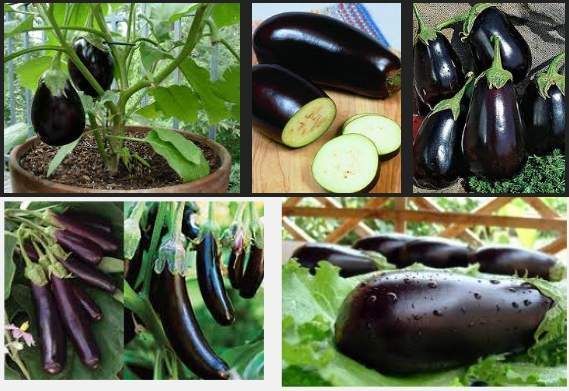 The government has warned on the critical insufficiency of college Science enrollment and its adverse effect in Science research which is worsened by judiciary-imposed limitations on field studies on the genetically modified (GM) Bt eggplant.Enrollment in the country’s college Science, Technology, Engineering, and Math (STEM) courses is now just at 549,000 students.This is an insignificant 16.14 percent of total undergraduate enrollment of 3.4 million. Of the 549,000 STEM enrolment, a large chunk of 150,000 is solely on the more familiar course civil engineering.CHED’s role is only in encouraging the youth to take certain challenging courses like STEM, Juanillo admitted.Yet, he warned the dismal enrolment level is foreboding of a similarly dismal future for the science and technology (S&T) sector and national development in general.“You don’t have a critical mass of young Filipinos who are engaged in science. This 549,000 students is not enough to propel discussion, intelligent critical thinking on all these issues (including GM crops). Come to think of it, what kind of national consciousness or discourse do we have in the Philippines?” said Juanillo in a National Biotechnology Week (NBW) press briefing.“Discussions will be based on folklore. And if a country is depending on folklore, what kind of informed decision-making are we going to have on these complex issues on science and technology?”Adverse effect on Science researchThere is also presently a limitation on experimentation or field testing conducted by plant scientists as the Court of Appeals (CA) has effectively issued a decision banning field testing on the GM Bt eggplant.“We hope research will be allowed so that government’s investment won’t be wasted. The (CA) ruling discourages our future generation of researchers to do research. Instead of getting the benefit of the research, the result is now delayed by five to 10 years,” said National Institute of Molecular Biology and Biotechnology Director Reynaldo V. Ebora in the same briefing.The ban on field testing of GM crops has huge adverse effect on the function of the College of Agriculture-University of the Philippines Los Banos (CA-UPLB), according to CA Dean Domingo Angeles.“The role of the university is to conduct research. The faculty who are in research generate new knowledge according to needs of the country. We want to give technology options to our farmers. Do farmers like it or not? If we are stopped in our duty in the university, that will be an affront to our own duty and academic freedom,” said Angeles.The lack of state-of-the-art laboratory and research facilities in the country is also discouraging Filipino science experts from abroad to go back and contribute to research and the economy.This was according to Philippine Council for Agriculture, Aquatic, Natural Resources Research and Development Jocelyn E. Eusebio.Role in national developmentBiotechnology, which includes GM technology, should be contributing to national development, Juanillo said.“Biotechnology should have a significant impact on food production and security, in health and nutrition as well as in environment safety and protection. Our intention in the National Biotechnology Week is to make visible the role biotechnology plays in national discourse,” said Juanillo.It should be beneficial to discuss issues on biotechnology and GM crops.“We believe biotechnology is one big avenue for our scientists and advocates as well as innovators in the field to express the value and premium we should be putting on science,” said Juanillo.Because of the lamentable state of science education in the Philippines, the serious problem is sometimes turned into a joke.“I have this recurring joke that in a school of fisheries, they usually have only two students. Kaya mas marami pa ang sirena sa ABS CBN at GMA, hindi pa kasali ang siokoy. We’re becoming a country with questions on the simplistic state of education.”Enrollment in Math and “thinking courses” (like Philosophy and Philippine Literature) is also dwindling.“Our mathematicians are just 1.62 percent of our underground population. In our last academic year, we produced only 1,000 new mathematicians. We could no longer limit some more or put parameters to decisions on career pathways of our young students, said Juanillo.R&D focusCHED’s thrust now is to encourage more youth to pursue courses on STEAM (Science, Technology, Engineering, Agri-fisheries, and Math).Its focus on our research and development will be five sectors -- food production and security, disaster preparedness or resiliency and disaster mitigation, smart analytics and engineering innovation, and translational health.The health R&D will even more have sharp focus. This will be on “reducing maternal mortality, newborn and child health and nutrition, tuberculosis, malaria” which are unmet Millennium Development goals.The other focus is on marine ecosystem because we’re 90 percent water and yet we don’t have marine scientists.”Appeal to mass media“Our appeal to mass media is we hope they will have wider space for really encouraging these areas of study that are very beautiful. They don’t have to be difficult disciplines,” Juanillo said.“STEAM is a very good acronym, and it’s very metaphorical for growth.”Unlike what some think, science experts are human.“Let this be a conversation for us. Let me also appeal to media that sometimes Science is also sexy. People in this room are not nerds. They are human beings, made of flesh and blood. Our appeal to the media to make science as part of the normal conversation in the country. Let’s use that as scaffolding for today’s conversation,” Juanillo said.Science or Math studies, he said, develop hardwork.“Math is great, seemingly they may be difficult. But I think we have to get our people’s mindset. Sometimes while these are more challenging or difficult, these subjects build character. Science builds ability to persevere, science needs patience, science needs perseverance, Juanillo said.“When you get into the whole discipline of science, it never leaves you. It’s something you carry with you no matter what. It definitely becomes a framework for decision making. You’re not speculative. You’re always looking for questioning whether that evidence is generated properly.”Bt eggplant uprootingFilipino scientists that developed Bt eggplant are hoping those (Greenpeace) that destroyed (uprooted) Bt eggplant trial crops at the UPLB test area will be punished based on legal violations.“The university hopes it will receive the right decision (in the Bt eggplant destruction case) because (the law says) not anyone should be allowed to enter the experimental site,” said Ebora. “If we had violation, then it should be stopped. But the field testing was compliant of all regulations.”Government, through the National Committee on Biosafety of the Philippines (NCBP) and the National Research Council of the Philippines (NRCP) is actually pursuing food and environment safety policies on biotechnology and GM products, according to NRCP Director Carina G. Lao in the same briefing.Export through Bt cornBecause of farmers’ adoption of Bt corn, which has the same technology as Bt eggplant, the country has become sufficient in corn, according to Department of Agriculture Biotechnology Chief Antonio Alfonso. It even now exports Bt corn silage.There is no record of ill health effect or ill effect on the environment from Bt corn in the last 20 years since Bt corn was released in 1996, Alfonso said.“If we did not start (commercializing) Bt corn 10 years ago, what would have happened to our corn sector. Now we have achieved self sufficiency in corn, and we’re no exporting corn because of Bt corn,” said Alfonso.There are now more than 800,000 hectares of land planted by farmers on Bt corn.If the courts stopped Bt eggplant field testing, how much more will there be questions on field testing of pesticides, according to Angeles.“This is only on biotechnology (Bt eggplant). How much more if we go to pesticide testing?We need to test pesticides to determine whether a pesticide is toxic or non toxic. We’re researching essentially to find out if these technologies are safe or not, if these technologies will protect or not protect our environment,” Angeles said.###
For any questions or interview requests (request for official contact numbers), please contact 0999-573-7077, 0917-733-6628.
The government has warned on the critical insufficiency of college Science enrollment and its adverse effect in Science research which is worsened by judiciary-imposed limitations on field studies on the genetically modified (GM) Bt eggplant.Enrollment in the country’s college Science, Technology, Engineering, and Math (STEM) courses is now just at 549,000 students.This is an insignificant 16.14 percent of total undergraduate enrollment of 3.4 million. Of the 549,000 STEM enrolment, a large chunk of 150,000 is solely on the more familiar course civil engineering.CHED’s role is only in encouraging the youth to take certain challenging courses like STEM, Juanillo admitted.Yet, he warned the dismal enrolment level is foreboding of a similarly dismal future for the science and technology (S&T) sector and national development in general.“You don’t have a critical mass of young Filipinos who are engaged in science. This 549,000 students is not enough to propel discussion, intelligent critical thinking on all these issues (including GM crops). Come to think of it, what kind of national consciousness or discourse do we have in the Philippines?” said Juanillo in a National Biotechnology Week (NBW) press briefing.“Discussions will be based on folklore. And if a country is depending on folklore, what kind of informed decision-making are we going to have on these complex issues on science and technology?”Adverse effect on Science researchThere is also presently a limitation on experimentation or field testing conducted by plant scientists as the Court of Appeals (CA) has effectively issued a decision banning field testing on the GM Bt eggplant.“We hope research will be allowed so that government’s investment won’t be wasted. The (CA) ruling discourages our future generation of researchers to do research. Instead of getting the benefit of the research, the result is now delayed by five to 10 years,” said National Institute of Molecular Biology and Biotechnology Director Reynaldo V. Ebora in the same briefing.The ban on field testing of GM crops has huge adverse effect on the function of the College of Agriculture-University of the Philippines Los Banos (CA-UPLB), according to CA Dean Domingo Angeles.“The role of the university is to conduct research. The faculty who are in research generate new knowledge according to needs of the country. We want to give technology options to our farmers. Do farmers like it or not? If we are stopped in our duty in the university, that will be an affront to our own duty and academic freedom,” said Angeles.The lack of state-of-the-art laboratory and research facilities in the country is also discouraging Filipino science experts from abroad to go back and contribute to research and the economy.This was according to Philippine Council for Agriculture, Aquatic, Natural Resources Research and Development Jocelyn E. Eusebio.Role in national developmentBiotechnology, which includes GM technology, should be contributing to national development, Juanillo said.“Biotechnology should have a significant impact on food production and security, in health and nutrition as well as in environment safety and protection. Our intention in the National Biotechnology Week is to make visible the role biotechnology plays in national discourse,” said Juanillo.It should be beneficial to discuss issues on biotechnology and GM crops.“We believe biotechnology is one big avenue for our scientists and advocates as well as innovators in the field to express the value and premium we should be putting on science,” said Juanillo.Because of the lamentable state of science education in the Philippines, the serious problem is sometimes turned into a joke.“I have this recurring joke that in a school of fisheries, they usually have only two students. Kaya mas marami pa ang sirena sa ABS CBN at GMA, hindi pa kasali ang siokoy. We’re becoming a country with questions on the simplistic state of education.”Enrollment in Math and “thinking courses” (like Philosophy and Philippine Literature) is also dwindling.“Our mathematicians are just 1.62 percent of our underground population. In our last academic year, we produced only 1,000 new mathematicians. We could no longer limit some more or put parameters to decisions on career pathways of our young students, said Juanillo.R&D focusCHED’s thrust now is to encourage more youth to pursue courses on STEAM (Science, Technology, Engineering, Agri-fisheries, and Math).Its focus on our research and development will be five sectors -- food production and security, disaster preparedness or resiliency and disaster mitigation, smart analytics and engineering innovation, and translational health.The health R&D will even more have sharp focus. This will be on “reducing maternal mortality, newborn and child health and nutrition, tuberculosis, malaria” which are unmet Millennium Development goals.The other focus is on marine ecosystem because we’re 90 percent water and yet we don’t have marine scientists.”Appeal to mass media“Our appeal to mass media is we hope they will have wider space for really encouraging these areas of study that are very beautiful. They don’t have to be difficult disciplines,” Juanillo said.“STEAM is a very good acronym, and it’s very metaphorical for growth.”Unlike what some think, science experts are human.“Let this be a conversation for us. Let me also appeal to media that sometimes Science is also sexy. People in this room are not nerds. They are human beings, made of flesh and blood. Our appeal to the media to make science as part of the normal conversation in the country. Let’s use that as scaffolding for today’s conversation,” Juanillo said.Science or Math studies, he said, develop hardwork.“Math is great, seemingly they may be difficult. But I think we have to get our people’s mindset. Sometimes while these are more challenging or difficult, these subjects build character. Science builds ability to persevere, science needs patience, science needs perseverance, Juanillo said.“When you get into the whole discipline of science, it never leaves you. It’s something you carry with you no matter what. It definitely becomes a framework for decision making. You’re not speculative. You’re always looking for questioning whether that evidence is generated properly.”Bt eggplant uprootingFilipino scientists that developed Bt eggplant are hoping those (Greenpeace) that destroyed (uprooted) Bt eggplant trial crops at the UPLB test area will be punished based on legal violations.“The university hopes it will receive the right decision (in the Bt eggplant destruction case) because (the law says) not anyone should be allowed to enter the experimental site,” said Ebora. “If we had violation, then it should be stopped. But the field testing was compliant of all regulations.”Government, through the National Committee on Biosafety of the Philippines (NCBP) and the National Research Council of the Philippines (NRCP) is actually pursuing food and environment safety policies on biotechnology and GM products, according to NRCP Director Carina G. Lao in the same briefing.Export through Bt cornBecause of farmers’ adoption of Bt corn, which has the same technology as Bt eggplant, the country has become sufficient in corn, according to Department of Agriculture Biotechnology Chief Antonio Alfonso. It even now exports Bt corn silage.There is no record of ill health effect or ill effect on the environment from Bt corn in the last 20 years since Bt corn was released in 1996, Alfonso said.“If we did not start (commercializing) Bt corn 10 years ago, what would have happened to our corn sector. Now we have achieved self sufficiency in corn, and we’re no exporting corn because of Bt corn,” said Alfonso.There are now more than 800,000 hectares of land planted by farmers on Bt corn.If the courts stopped Bt eggplant field testing, how much more will there be questions on field testing of pesticides, according to Angeles.“This is only on biotechnology (Bt eggplant). How much more if we go to pesticide testing?We need to test pesticides to determine whether a pesticide is toxic or non toxic. We’re researching essentially to find out if these technologies are safe or not, if these technologies will protect or not protect our environment,” Angeles said.###
For any questions or interview requests (request for official contact numbers), please contact 0999-573-7077, 0917-733-6628.

 The dairy cattle industry is one of the primary sources of income among cattle raisers, especially the farmers from the province of Isabela in Cagayan Valley, where there is a wide range of rice and corn fields, and therefore could be an abundant source of feed resources (i.e. green corn as forage/silage, rice straw, corn stover)However, despite the vastnesses of areas, many dairy farmers are still faced with scarcity problem of quality feed resources for dairy animals especially during dry season. The supply of forage is very low during the dry spell. The wet season is the peak season wherein quality feeds are high in supply, therefore contributing to the good milk production of cows.To address feed quality and scarcity, and improve the current state of the dairy sector, it is recommended to come up with quality feed and roughages that will be made available all-year-round. Forages and roughages are the backbone of the industry, because ruminants like cow depend on them for milk and meat production.Farmers need to be proficient in managing the development of forages and having an alternative supply of quality forage during lean months will help reduce the cost of feed production and increase milk production and profit. A possible approach that can be made is through forage production and silage, enriched with locally-available fodder, could provide a year-round consistent feed supply with low-cost quality nutrients for livestock.
The dairy cattle industry is one of the primary sources of income among cattle raisers, especially the farmers from the province of Isabela in Cagayan Valley, where there is a wide range of rice and corn fields, and therefore could be an abundant source of feed resources (i.e. green corn as forage/silage, rice straw, corn stover)However, despite the vastnesses of areas, many dairy farmers are still faced with scarcity problem of quality feed resources for dairy animals especially during dry season. The supply of forage is very low during the dry spell. The wet season is the peak season wherein quality feeds are high in supply, therefore contributing to the good milk production of cows.To address feed quality and scarcity, and improve the current state of the dairy sector, it is recommended to come up with quality feed and roughages that will be made available all-year-round. Forages and roughages are the backbone of the industry, because ruminants like cow depend on them for milk and meat production.Farmers need to be proficient in managing the development of forages and having an alternative supply of quality forage during lean months will help reduce the cost of feed production and increase milk production and profit. A possible approach that can be made is through forage production and silage, enriched with locally-available fodder, could provide a year-round consistent feed supply with low-cost quality nutrients for livestock. To operationalize the supply of quality forages, the Bureau of Agricultural Research (BAR) is currently working with the Isabela State University (ISU) on a BAR-funded project, “Adoption and Commercialization of Green Corn, Green Corn-based Silage, Haylage and UMMB Production for Dairy Cattle in Cagayan Valley”. Leading the projects are Dr. Nilo E. Padilla and Dr. Diosdado C. Cañete of ISU in collaboration with Department of Agriculture Region-Regional Field Office 2.The primary of objective of the project is to improve dairy production and ultimately increase the income of dairy farmers through the utilization of green corn silage, haylage and Urea Molasses Mineral Block (UMMB) supplementation using locally available feed resources.According to the project proponents, green corn silage production, nutrient-enriched rice straw (as haylage) and the use of UMMB have been proven to improve nutrition among dairy animals, and thus improving milk and meat production.Corn silage is a high energy feed resource for ruminants being part forage and part grain. In terms of nutrient content, corn silage is lower in crude protein and higher in digestible energy than other forages. Corn is relatively easy to ensile. As a minimum feed requirement, it is essential to provide a green fodder supplement to enhance rumen function for bovine animals and to increase milk production. Forage conserved this way is known as ‘ensiled forage’ or ‘silage’ and will keep for up to three years without deteriorating. Silage is very palatable to livestock and can be fed at any time. It is also considered the most convenient way to conserve forage crops.According to the report of ISU, the project has been piloted in Malaya Development Cooperative (MDC) and Quezon Dairy Farmers Cooperative. The farmers tapped in the piloted areas will plant corn and will be at 70-85 days old corn. Corn will be chopped and packed in a 30-40 kgs capacity sacks with polyethylene bag, air removed from the bags using vacuum pump, sealed, and stored in a place safe of rats. The silage is ready for feeding after 3 weeks in storage.On-site and experiential learnings on: 1) production of silage, haylage, and UMMB, 2) showcasing or demonstration feeding of silage and haylage, use of UMMB as feed supplement, 3) cooperative/ association strengthening, among others have already been conducted.As a result of the awareness campaign and capability building component of this BAR-funded project, the MDC has fully adopted silage as feed to their dairy animals. Milk production has gradually increased from 3 liters/ head/day to 10-11 liters/ head/ day. The cooperative is now growing their own corn for silage production, while the other coop is now ready to produce their own silage.With the project on board, BAR and ISU project is expected to address the year-round availability of nutrient-rich feedstuff for dairy cattle/carabao; increased lactation period, milk production per head and total milk production (community, municipality, province, region); higher household income; improved nutrition of farm families, and less dependence on imported milk and milk products. ###by Patrick Raymund A. Lesaca, https://www.bar.gov.ph
------------For more information:Dr. Nilo E. Padilla and Dr. Diosdado C. Cañete
Professor VI and Associate Professor IV
Isabela State University, Echague, Isabela
Telephone Number(s): 09163225967 and 09088620681
Fax Number: (078) 305-0120 2.7.
Email Address:
To operationalize the supply of quality forages, the Bureau of Agricultural Research (BAR) is currently working with the Isabela State University (ISU) on a BAR-funded project, “Adoption and Commercialization of Green Corn, Green Corn-based Silage, Haylage and UMMB Production for Dairy Cattle in Cagayan Valley”. Leading the projects are Dr. Nilo E. Padilla and Dr. Diosdado C. Cañete of ISU in collaboration with Department of Agriculture Region-Regional Field Office 2.The primary of objective of the project is to improve dairy production and ultimately increase the income of dairy farmers through the utilization of green corn silage, haylage and Urea Molasses Mineral Block (UMMB) supplementation using locally available feed resources.According to the project proponents, green corn silage production, nutrient-enriched rice straw (as haylage) and the use of UMMB have been proven to improve nutrition among dairy animals, and thus improving milk and meat production.Corn silage is a high energy feed resource for ruminants being part forage and part grain. In terms of nutrient content, corn silage is lower in crude protein and higher in digestible energy than other forages. Corn is relatively easy to ensile. As a minimum feed requirement, it is essential to provide a green fodder supplement to enhance rumen function for bovine animals and to increase milk production. Forage conserved this way is known as ‘ensiled forage’ or ‘silage’ and will keep for up to three years without deteriorating. Silage is very palatable to livestock and can be fed at any time. It is also considered the most convenient way to conserve forage crops.According to the report of ISU, the project has been piloted in Malaya Development Cooperative (MDC) and Quezon Dairy Farmers Cooperative. The farmers tapped in the piloted areas will plant corn and will be at 70-85 days old corn. Corn will be chopped and packed in a 30-40 kgs capacity sacks with polyethylene bag, air removed from the bags using vacuum pump, sealed, and stored in a place safe of rats. The silage is ready for feeding after 3 weeks in storage.On-site and experiential learnings on: 1) production of silage, haylage, and UMMB, 2) showcasing or demonstration feeding of silage and haylage, use of UMMB as feed supplement, 3) cooperative/ association strengthening, among others have already been conducted.As a result of the awareness campaign and capability building component of this BAR-funded project, the MDC has fully adopted silage as feed to their dairy animals. Milk production has gradually increased from 3 liters/ head/day to 10-11 liters/ head/ day. The cooperative is now growing their own corn for silage production, while the other coop is now ready to produce their own silage.With the project on board, BAR and ISU project is expected to address the year-round availability of nutrient-rich feedstuff for dairy cattle/carabao; increased lactation period, milk production per head and total milk production (community, municipality, province, region); higher household income; improved nutrition of farm families, and less dependence on imported milk and milk products. ###by Patrick Raymund A. Lesaca, https://www.bar.gov.ph
------------For more information:Dr. Nilo E. Padilla and Dr. Diosdado C. Cañete
Professor VI and Associate Professor IV
Isabela State University, Echague, Isabela
Telephone Number(s): 09163225967 and 09088620681
Fax Number: (078) 305-0120 2.7.
Email Address: 
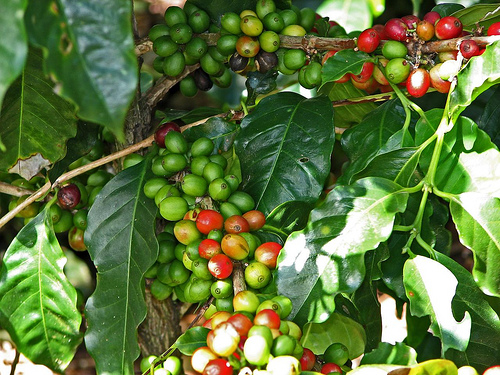 Photo by
Photo by 

 Because suitable wood materials are scarce, there has been a shift to the use of minor forest products for furniture manufacture. These minor forest products include rattan, bamboo and buri. Surprisingly, furniture made from these materials were accepted easily both in the local and foreign markets. However, due to overexploitation, these forest
resources are likewise depleting. Thus, exploration for other prospective raw materials continues.Several wood species are being used in the manufacture of these novelty products. Dau, balete, kakawate, and tan-ag are preferred for sala sets. Balete, acacia, pili and antipolo are used in the manufacture of bar sets.Processing TechniquesThere are several steps in the manufacture of these novelty items. These are the following: digging, transporting, cutting, debarking, scraping, drying, bleaching, sanding and preservative and varnish application.Digging of the stumps is done in logged-over areas in Tayabas, Gumaca and Sampaloc in Quezon Province. After digging, these are immediately transported to Pansol, Calamba, Laguna for processing is easier when the raw materials are still fresh.Upon reaching Pansol, the stumps are cut into the desired sizes; after which these are debarked, scraped and sundried for about five hours.Sundrying follows after scraping. Then, coarse sanding, bleaching and fine sanding are done; after which preservative treatment is applied to the product.The last step is the application of varnish or lacquer to the finished product to enhance its appearance.A great number of the buyers of these novelty products come from Taiwan, Japan and as far as Saudi Arabia.Source: PCARRD Monitor, Feb-Mar 1989
Because suitable wood materials are scarce, there has been a shift to the use of minor forest products for furniture manufacture. These minor forest products include rattan, bamboo and buri. Surprisingly, furniture made from these materials were accepted easily both in the local and foreign markets. However, due to overexploitation, these forest
resources are likewise depleting. Thus, exploration for other prospective raw materials continues.Several wood species are being used in the manufacture of these novelty products. Dau, balete, kakawate, and tan-ag are preferred for sala sets. Balete, acacia, pili and antipolo are used in the manufacture of bar sets.Processing TechniquesThere are several steps in the manufacture of these novelty items. These are the following: digging, transporting, cutting, debarking, scraping, drying, bleaching, sanding and preservative and varnish application.Digging of the stumps is done in logged-over areas in Tayabas, Gumaca and Sampaloc in Quezon Province. After digging, these are immediately transported to Pansol, Calamba, Laguna for processing is easier when the raw materials are still fresh.Upon reaching Pansol, the stumps are cut into the desired sizes; after which these are debarked, scraped and sundried for about five hours.Sundrying follows after scraping. Then, coarse sanding, bleaching and fine sanding are done; after which preservative treatment is applied to the product.The last step is the application of varnish or lacquer to the finished product to enhance its appearance.A great number of the buyers of these novelty products come from Taiwan, Japan and as far as Saudi Arabia.Source: PCARRD Monitor, Feb-Mar 1989

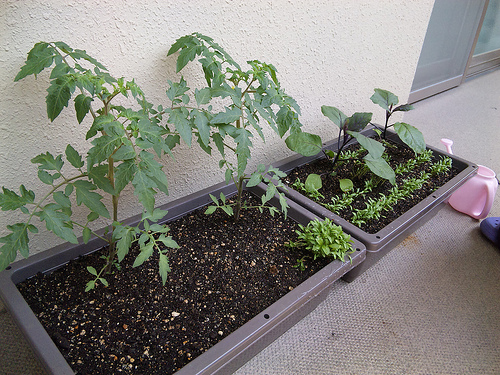 Photo by
Photo by 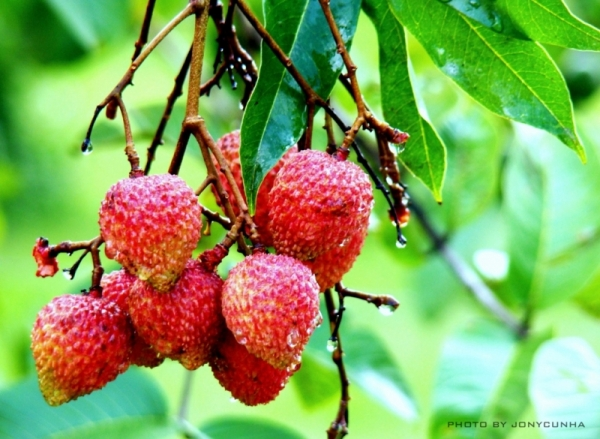

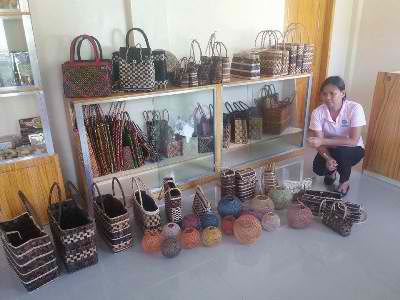 The Philippines Abaca Market Forecast and Opportunities reported that the abaca market is projected to grow at a compound annual growth rate (CAGR) of around 5.7 percent until 2019. Given this, there will be a continuous demand for abaca and its by-products for the future years thereby the need to increase production to cater to the local and international markets.Fabricating abaca machineThe National Abaca Research Center (NARC) based at the Visayas State University (VSU), Baybay City in Leyte, one of the agencies mandated to uplift the abaca industry, has developed a multi-stranded yarning machine for the production of abaca yarn. This is to replace the tedious, time-consuming, and knotting method of tinagak-making. Support is being provided by the High Value Crops Development Program (HVCDP) and the Bureau of Agricultural Research (BAR) through its National Technology Commercialization Program (NTCP).
The Philippines Abaca Market Forecast and Opportunities reported that the abaca market is projected to grow at a compound annual growth rate (CAGR) of around 5.7 percent until 2019. Given this, there will be a continuous demand for abaca and its by-products for the future years thereby the need to increase production to cater to the local and international markets.Fabricating abaca machineThe National Abaca Research Center (NARC) based at the Visayas State University (VSU), Baybay City in Leyte, one of the agencies mandated to uplift the abaca industry, has developed a multi-stranded yarning machine for the production of abaca yarn. This is to replace the tedious, time-consuming, and knotting method of tinagak-making. Support is being provided by the High Value Crops Development Program (HVCDP) and the Bureau of Agricultural Research (BAR) through its National Technology Commercialization Program (NTCP).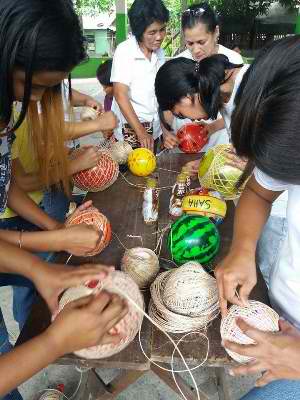 According to Dr. Feliciano G. Sinon, NARC-VSU project leader, in a traditional scenario, the conventional production of small twines for abaca handicraft is done by knotting individual fiber, combining the yarns, and twisting them into filaments to produce twine. This process is slow and labor intensive. Moreover, the traditional making of twine is a laborious work since the operator has to walk back and forth in setting the twisting end and in laying operation. Thus, NARC embarked on a project titled, “Development of a Twining Machine for the Production of 1-5 mm diameter Abaca Twine” that aimed to develop a twining machine for fast production of abaca twine from multi-stranded and untwisted abaca yarn and mainly to bring abaca machine generated technology to its adaptors and possible end-users.
According to Dr. Feliciano G. Sinon, NARC-VSU project leader, in a traditional scenario, the conventional production of small twines for abaca handicraft is done by knotting individual fiber, combining the yarns, and twisting them into filaments to produce twine. This process is slow and labor intensive. Moreover, the traditional making of twine is a laborious work since the operator has to walk back and forth in setting the twisting end and in laying operation. Thus, NARC embarked on a project titled, “Development of a Twining Machine for the Production of 1-5 mm diameter Abaca Twine” that aimed to develop a twining machine for fast production of abaca twine from multi-stranded and untwisted abaca yarn and mainly to bring abaca machine generated technology to its adaptors and possible end-users.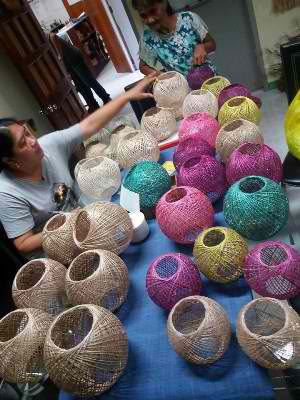 Considered more economical than the traditional technique, the machine can produce 1.5 kg per day of multi-stranded yarn as compared to 1.0 kg of yarn per week using the knotting method. Twining capacity of the machine can produce good quality 1mm diameter twine at 200 m/hr, wherein the twine made from tinagak yarn using the machine was very smooth and has no protruding fiber ends.Dr. Sinon pointed out that, the fabrication of the prototype twine machine was subjected to a series of different evaluation for its operational functionality. As a result, the machine has good acceptability ratings to end-users. Piloting activity of twining machine was tested, and many of the abaca handi-crafters in the community said that, “the twine machine is very useful for handicraft making, easy and simple to operate.” They also mentioned that the community could have one unit in the future, and end the manual twine making.The cost and return analysis of the machine amounts to Php 45,000 with the net income of about Php 129/day with a payback period of 1.71 years and a return on investment as high as 58.35 percent.Currently, two units of the machine were already sold to abaca cooperatives in Maharlika Abaca Growers Association of Magara, Roxas, Palawan and Sibugay, Zamboanga City for their handicraft production and expansion.SAHA engages back into business
Considered more economical than the traditional technique, the machine can produce 1.5 kg per day of multi-stranded yarn as compared to 1.0 kg of yarn per week using the knotting method. Twining capacity of the machine can produce good quality 1mm diameter twine at 200 m/hr, wherein the twine made from tinagak yarn using the machine was very smooth and has no protruding fiber ends.Dr. Sinon pointed out that, the fabrication of the prototype twine machine was subjected to a series of different evaluation for its operational functionality. As a result, the machine has good acceptability ratings to end-users. Piloting activity of twining machine was tested, and many of the abaca handi-crafters in the community said that, “the twine machine is very useful for handicraft making, easy and simple to operate.” They also mentioned that the community could have one unit in the future, and end the manual twine making.The cost and return analysis of the machine amounts to Php 45,000 with the net income of about Php 129/day with a payback period of 1.71 years and a return on investment as high as 58.35 percent.Currently, two units of the machine were already sold to abaca cooperatives in Maharlika Abaca Growers Association of Magara, Roxas, Palawan and Sibugay, Zamboanga City for their handicraft production and expansion.SAHA engages back into business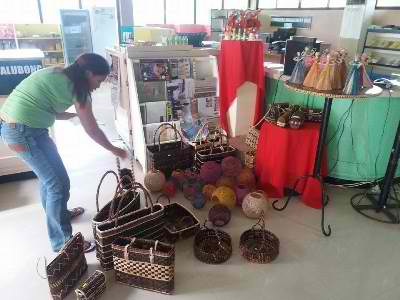 Seeing the importance of machine developed to the abaca processors and to other possible-end users, the project aimed to establish a village-level abaca yarn production and abaca by-products processing enterprises. This provides greater chances to strengthen the production capability of handicraft- abaca makers to engage in agribusiness using the developed machine. Thus, to further pursue this goal, the project “Pilot Production and Commercialization of Abaca Yarn, Twine, and its Derived Products in Region 8 Areas,” was implemented by NARC-VSU.The San Agustin Abaca Handi-crafters Association (SAHA) in San Agustin, Babay City, Leyte, project collaborator of NARC-VSU, reorganized in 2015 capacitating their skills through training provided by NARC-VSU Team. Members of the association received learning skills on handicraft production, business-operational management, product marketing, and product development. The team also provided them technical assistance to develop both their leadership and organizational capabilities.After the training in 2016, SAHA’s business operation started producing abaca yarns and processed abaca into new high-valued products. Aside from products made from “bacbac” like bags and coin purse, SAHA is now offering new products including twine balls, abaca decorative vases, macramé twine handbags, sinamay bags and other abaca derived products using abaca yarns and twines out of the generated machine.To have a centralized area for SAHA’s business operation, a Handicraft Processing Center was also constructed by the project in the community. SAHA members are involved in all operational processes including purchasing of raw materials, making handicraft products, and delivery, among others. At present, four establishments in nearby locality of Baybay City, Leyte marketed their abaca products. These are: VSU Pasalubong Center; Baybay City Pasalubong Center; Laurente’s Store; and VSU-NARC Display Room.SAHA also developed good business strategy wherein business operation and management scheme has been stabilized by the member to continue and enhance the production of their newly-developed products. Thus, the association provided the raw materials to the members and they in turn encouraged selling their products directly to the association where they are paid in cash. The percentage of the income goes to the association for additional budget for its continuous operation.Sinon shared that the biggest benefit of the project was not only to provide abaca handi-crafters with additional knowledge on making abaca products for their income opportunities, but also to improve teaching capabilities by sharing their acquired knowledge through training. SAHA members continuously involved themselves from trainees to trainors, and recently they were tapped as resource persons in various handicraft trainings within Visayas and Mindanao. ### (Leoveliza C. Fontanil)Source: http://www.bar.gov.ph/
Seeing the importance of machine developed to the abaca processors and to other possible-end users, the project aimed to establish a village-level abaca yarn production and abaca by-products processing enterprises. This provides greater chances to strengthen the production capability of handicraft- abaca makers to engage in agribusiness using the developed machine. Thus, to further pursue this goal, the project “Pilot Production and Commercialization of Abaca Yarn, Twine, and its Derived Products in Region 8 Areas,” was implemented by NARC-VSU.The San Agustin Abaca Handi-crafters Association (SAHA) in San Agustin, Babay City, Leyte, project collaborator of NARC-VSU, reorganized in 2015 capacitating their skills through training provided by NARC-VSU Team. Members of the association received learning skills on handicraft production, business-operational management, product marketing, and product development. The team also provided them technical assistance to develop both their leadership and organizational capabilities.After the training in 2016, SAHA’s business operation started producing abaca yarns and processed abaca into new high-valued products. Aside from products made from “bacbac” like bags and coin purse, SAHA is now offering new products including twine balls, abaca decorative vases, macramé twine handbags, sinamay bags and other abaca derived products using abaca yarns and twines out of the generated machine.To have a centralized area for SAHA’s business operation, a Handicraft Processing Center was also constructed by the project in the community. SAHA members are involved in all operational processes including purchasing of raw materials, making handicraft products, and delivery, among others. At present, four establishments in nearby locality of Baybay City, Leyte marketed their abaca products. These are: VSU Pasalubong Center; Baybay City Pasalubong Center; Laurente’s Store; and VSU-NARC Display Room.SAHA also developed good business strategy wherein business operation and management scheme has been stabilized by the member to continue and enhance the production of their newly-developed products. Thus, the association provided the raw materials to the members and they in turn encouraged selling their products directly to the association where they are paid in cash. The percentage of the income goes to the association for additional budget for its continuous operation.Sinon shared that the biggest benefit of the project was not only to provide abaca handi-crafters with additional knowledge on making abaca products for their income opportunities, but also to improve teaching capabilities by sharing their acquired knowledge through training. SAHA members continuously involved themselves from trainees to trainors, and recently they were tapped as resource persons in various handicraft trainings within Visayas and Mindanao. ### (Leoveliza C. Fontanil)Source: http://www.bar.gov.ph/

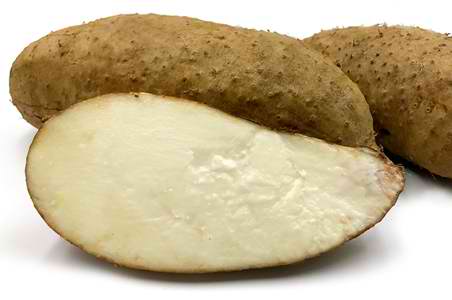 This lesser yam is native to Southeast Asia and is one of the first yam species that was cultivated. It is considered as an underutilized crop that is only remembered mostly during the long period of famine when people have nothing to eat. People would rely on Apali as it is always available. It can be stored for six months. It grows in rainfed or upland and marginal lands and can be grown as a backup crop during growing seasons of rice and corn.Depending on the variety, Apali plant can grow up to 50 cm long and can produce 5-20 tubers per plant. The stems are cylindrical, pubescent, with scattered prickles. Physically, Apali has a smaller corm than other yams, looking like a long and narrow sweet potato but occasionally it can be a spindle or branched. Its flesh, which is smooth and has no fibers, unlike most rootcrops, ranges from white to cream color.Often served cooked either boiled or roasted, Apali is high in Vitamin C, dietary fiber, Vitamin B6, potassium, and manganese. It is low in saturated fat and sodium and promotes good healthy balance in human body against osteoporosis and heart disease.Apali is minimally cultivated in the country either due to lack of awareness of the crop or due to its unexplored economic potentials as fresh and processed foods.Given the great potential of Apali, the Agriculture-Regional Field Office (DA-RFO) 11 embarked on a three-year study titled, “Collection, Evaluation and Identification of Apali Cultivars Suitable for Food Processing in Region XI”. Funded by the Bureau of Agricultural Research (BAR), the study aimed to increase the supply of Apali, identify the best variety that has long shelf life and best for processing, and develop Apali package of technology that the farmers can easily adapt. With the increased supply of Apali production, is also exploring the various product development initiatives that can be derived from indigenous crop.According to Jorgea C. Galindo, researcher from Department of Agriculture-Regional Field Office (DA-RFO) 11 who is also the project leader, Apali can be found in the tropical forest in the Philippines and is considered as an indigenous rootcrop that can substitute rice and corn. It can be processed into various products including cue, boiled, sweetened, jams, candies, and vegetable mixed or stewed with meat.Due to its potato-like characteristics, Apali can also be sliced or diced and boiled or fried like chips or fries. In fact, the DA-RFO 11 has recently come up with the Pinoy version of French fries, using Apali. Dubbed as the “Apali Pinoy fries” it was found to taste very similar with that of French fries in terms of texture and appearance. The taste was found to be acceptable among those who have tried it during trade fairs and exhibits.The project enabled DA-RFO 11 to produce Apali flour and various Apali-flour based products including cookies, crinkles, and munchkins. These products won the “Best Products Award” during the recently concluded “13th Agriculture and Fisheries Technology Forum and Product Exhibition” organized by BAR. The award is annually given to product of research and development that is unique, has an appropriate packaging and labeling, possesses market potential, and is relevant to achieving food security and health and wellness. ### (Rita T. dela Cruz)Source: http://www.bar.gov.ph
This lesser yam is native to Southeast Asia and is one of the first yam species that was cultivated. It is considered as an underutilized crop that is only remembered mostly during the long period of famine when people have nothing to eat. People would rely on Apali as it is always available. It can be stored for six months. It grows in rainfed or upland and marginal lands and can be grown as a backup crop during growing seasons of rice and corn.Depending on the variety, Apali plant can grow up to 50 cm long and can produce 5-20 tubers per plant. The stems are cylindrical, pubescent, with scattered prickles. Physically, Apali has a smaller corm than other yams, looking like a long and narrow sweet potato but occasionally it can be a spindle or branched. Its flesh, which is smooth and has no fibers, unlike most rootcrops, ranges from white to cream color.Often served cooked either boiled or roasted, Apali is high in Vitamin C, dietary fiber, Vitamin B6, potassium, and manganese. It is low in saturated fat and sodium and promotes good healthy balance in human body against osteoporosis and heart disease.Apali is minimally cultivated in the country either due to lack of awareness of the crop or due to its unexplored economic potentials as fresh and processed foods.Given the great potential of Apali, the Agriculture-Regional Field Office (DA-RFO) 11 embarked on a three-year study titled, “Collection, Evaluation and Identification of Apali Cultivars Suitable for Food Processing in Region XI”. Funded by the Bureau of Agricultural Research (BAR), the study aimed to increase the supply of Apali, identify the best variety that has long shelf life and best for processing, and develop Apali package of technology that the farmers can easily adapt. With the increased supply of Apali production, is also exploring the various product development initiatives that can be derived from indigenous crop.According to Jorgea C. Galindo, researcher from Department of Agriculture-Regional Field Office (DA-RFO) 11 who is also the project leader, Apali can be found in the tropical forest in the Philippines and is considered as an indigenous rootcrop that can substitute rice and corn. It can be processed into various products including cue, boiled, sweetened, jams, candies, and vegetable mixed or stewed with meat.Due to its potato-like characteristics, Apali can also be sliced or diced and boiled or fried like chips or fries. In fact, the DA-RFO 11 has recently come up with the Pinoy version of French fries, using Apali. Dubbed as the “Apali Pinoy fries” it was found to taste very similar with that of French fries in terms of texture and appearance. The taste was found to be acceptable among those who have tried it during trade fairs and exhibits.The project enabled DA-RFO 11 to produce Apali flour and various Apali-flour based products including cookies, crinkles, and munchkins. These products won the “Best Products Award” during the recently concluded “13th Agriculture and Fisheries Technology Forum and Product Exhibition” organized by BAR. The award is annually given to product of research and development that is unique, has an appropriate packaging and labeling, possesses market potential, and is relevant to achieving food security and health and wellness. ### (Rita T. dela Cruz)Source: http://www.bar.gov.ph



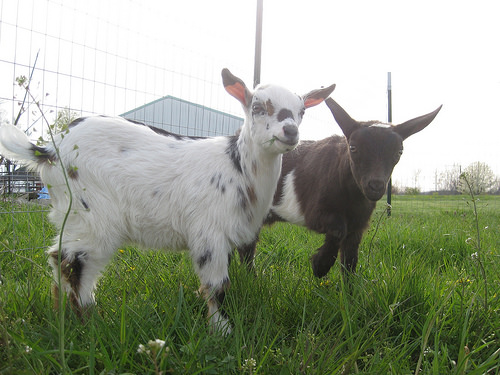 Photo by
Photo by 
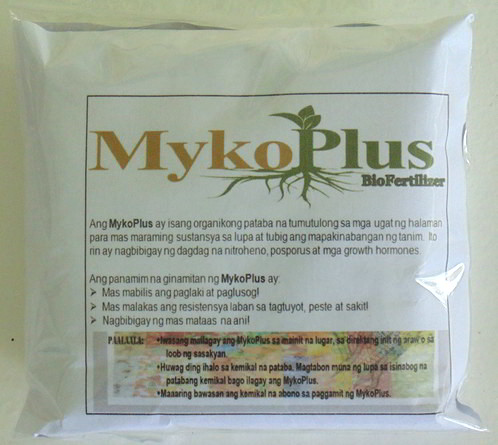 MykoPlus is a multi-strain and multi-species biofertilizer. In addition to mycorrhizal fungi, MykoPlus also contains beneficial bacteria that include nitrogen fixers, phosphorous solubilizers, growth hormone secretors, and others.MykoPlus was developed by Dr. Jocelyn T. Zarate and her team from the National Institute of Molecular Biology and Biotechnology at the University of the Philippines Los Baños.In a two-season farmer’s field trial in Isabela and Cagayan, results showed that coating corn seeds with the powdered MykoPlus inoculant prior to sowing enhanced the crop’s ability to assimilate nutrients.A 30% savings on the use of recommended chemical fertilizer was also realized. Yield was higher or comparable to crops receiving 100% recommended rate of chemical fertilizer alone.Soil analysis after the cropping season showed that soil pH was not as low as that of without using MykoPlus. Higher residual nitrogen and phosphorus in the soil was also noted.In Manaoag, Pangasinan, farmers using MykoPlus observed that their crops had enhanced rooting, taller shoots, greater yield, and better survival from the prolonged flooding brought about by typhoons.MykoPlus was also found good for rice, sorghum, cassava and vegetables. In rice, more filled grains were observed leading to heavier grain yield.The synergistic interaction of the mycorrhizal fungi and bacteria in MykoPlus brings about these good results.However, the most important effect of applying MykoPlus is that it creates a diverse population of beneficial microbes. The continuous application of beneficial microbes such as those in MykoPlus brings back life to soils damaged by repeated and heavy application of chemical inputs.Currently, the Department of Science and Technology’s Philippine Council for Agriculture, Aquatic and Natural Resources Research and Development (DOST-PCAARRD) is funding the “MykoPlus technology promotion and demonstration trials for yellow corn and eggplant,” a component project of the program, ”Development and promotion of new and enhanced biofertilizers, biostimulants, and biopesticides for increased crop productivity.”MykoPlus is one of the many R&D undertakings supported by DOST-PCAARRD in response to its commitment to Outcome One. Outcome One is DOST’S commitment to raise the productivity of the agriculture sector to world-class standards through the use of science-based know-how and tools. DOST-PCAARRD leads this commitment.by Butch S. Pagcaliwagan, DOST-PCAARRD S&T Media Service
MykoPlus is a multi-strain and multi-species biofertilizer. In addition to mycorrhizal fungi, MykoPlus also contains beneficial bacteria that include nitrogen fixers, phosphorous solubilizers, growth hormone secretors, and others.MykoPlus was developed by Dr. Jocelyn T. Zarate and her team from the National Institute of Molecular Biology and Biotechnology at the University of the Philippines Los Baños.In a two-season farmer’s field trial in Isabela and Cagayan, results showed that coating corn seeds with the powdered MykoPlus inoculant prior to sowing enhanced the crop’s ability to assimilate nutrients.A 30% savings on the use of recommended chemical fertilizer was also realized. Yield was higher or comparable to crops receiving 100% recommended rate of chemical fertilizer alone.Soil analysis after the cropping season showed that soil pH was not as low as that of without using MykoPlus. Higher residual nitrogen and phosphorus in the soil was also noted.In Manaoag, Pangasinan, farmers using MykoPlus observed that their crops had enhanced rooting, taller shoots, greater yield, and better survival from the prolonged flooding brought about by typhoons.MykoPlus was also found good for rice, sorghum, cassava and vegetables. In rice, more filled grains were observed leading to heavier grain yield.The synergistic interaction of the mycorrhizal fungi and bacteria in MykoPlus brings about these good results.However, the most important effect of applying MykoPlus is that it creates a diverse population of beneficial microbes. The continuous application of beneficial microbes such as those in MykoPlus brings back life to soils damaged by repeated and heavy application of chemical inputs.Currently, the Department of Science and Technology’s Philippine Council for Agriculture, Aquatic and Natural Resources Research and Development (DOST-PCAARRD) is funding the “MykoPlus technology promotion and demonstration trials for yellow corn and eggplant,” a component project of the program, ”Development and promotion of new and enhanced biofertilizers, biostimulants, and biopesticides for increased crop productivity.”MykoPlus is one of the many R&D undertakings supported by DOST-PCAARRD in response to its commitment to Outcome One. Outcome One is DOST’S commitment to raise the productivity of the agriculture sector to world-class standards through the use of science-based know-how and tools. DOST-PCAARRD leads this commitment.by Butch S. Pagcaliwagan, DOST-PCAARRD S&T Media Service

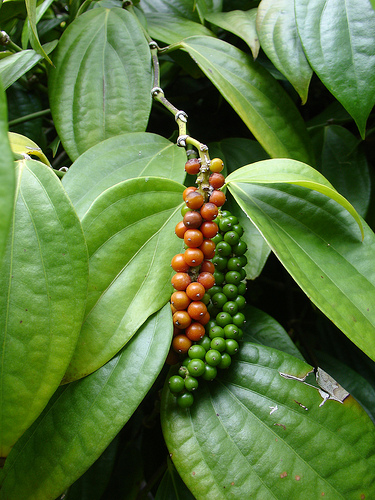 Photo by
Photo by 
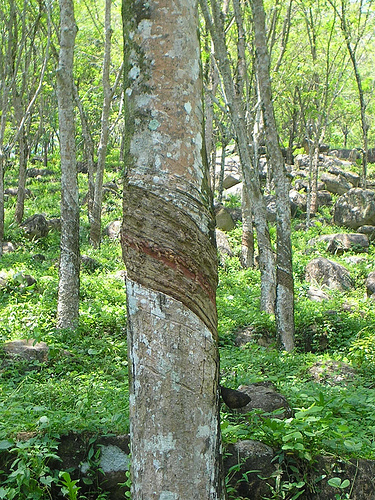 Photo by
Photo by 
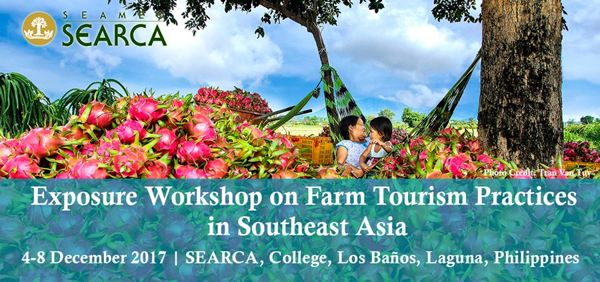 Farm tourism a path to inclusive and sustainable agriculture[/caption]He also disclosed Senator Cynthia A. Villar is pushing for signing into law of the Farm Tourism Development Act. It effectively institutionalizes the Philippine government’s farm tourism programs in helping raise farmers’ incomes and increase players in the rural tourism industry.SEARCA just opened this week a 5-day exposure workshop on Farm Tourism Practices designed for different stakeholders to learn and adopt trends in farm tourism across Southeast Asia.It received participants from Cambodia, Indonesia, Philippines, Thailand, Timor Leste, and Vietnam – plus Taiwan represented by a resource person.The workshop also showcases agriculture as a productive business endeavor and an exciting field of study among young people.In a similar effort to boost agritourism, the Southeast Asian AgriMuseum and Learning Center in Agricultural and Rural Development will in the future offer this farm tourism workshop, according to Saguiguit.“These initiatives will place agriculture and the exciting prospects it has to offer centerstage. This is towards greater appreciation of agriculture not just for the youth in their career choices, but also for other important sectors and the general public,” he said.The workshop is in partnership with the Department of Tourism (DOT) and International School of Sustainable Tourism (ISST) which SEARCA has tapped as knowledge partners.“These two institutions have been very busy making great progress in advancing farm tourism in the Philippines, along with partner agencies like the Agricultural Training Institute of the Department of Agriculture (DA-ATI), Technical Education and Skills Development Authority (TESDA), and Department of Trade and Industry, with the active engagement of farm tourism operators,” said Saguiguit.In 2012, SEARCA spearheaded the First Philippine National Agritourissm Research Conference that aimed to identify research gaps and policies that can help develop agritourism in the country.The exposure-workshop features presentations led by ISST President and former Tourism Secretary Dr. Mina T. Gabor, on global and regional trends in farm tourism; followed by presentations by experts from the University of the Philippines Los Baños, DOT, Maejo University in Chiang Mai, Thailand, Chung Hsing University in Taiwan, various leaders and chief executive officers in farm tourism practice in the Philippines and in Thailand, Central Bicol State University of Agriculture, and agriculture consultants.Details about the workshop and its program are found at http://bit.ly/farm-tourism-wshop-2017.The learning event is organized by SEARCA's Training Unit under its Knowledge Management Department, reported SEARCA Knowledge Management Head Maria Celeste H. Cadiz. (Growth Publishing for SEARCA)For any questions or interview request, please contact 0929-715-8669, 0917-102-6734 (Growth Publishing for SEARCA)
Farm tourism a path to inclusive and sustainable agriculture[/caption]He also disclosed Senator Cynthia A. Villar is pushing for signing into law of the Farm Tourism Development Act. It effectively institutionalizes the Philippine government’s farm tourism programs in helping raise farmers’ incomes and increase players in the rural tourism industry.SEARCA just opened this week a 5-day exposure workshop on Farm Tourism Practices designed for different stakeholders to learn and adopt trends in farm tourism across Southeast Asia.It received participants from Cambodia, Indonesia, Philippines, Thailand, Timor Leste, and Vietnam – plus Taiwan represented by a resource person.The workshop also showcases agriculture as a productive business endeavor and an exciting field of study among young people.In a similar effort to boost agritourism, the Southeast Asian AgriMuseum and Learning Center in Agricultural and Rural Development will in the future offer this farm tourism workshop, according to Saguiguit.“These initiatives will place agriculture and the exciting prospects it has to offer centerstage. This is towards greater appreciation of agriculture not just for the youth in their career choices, but also for other important sectors and the general public,” he said.The workshop is in partnership with the Department of Tourism (DOT) and International School of Sustainable Tourism (ISST) which SEARCA has tapped as knowledge partners.“These two institutions have been very busy making great progress in advancing farm tourism in the Philippines, along with partner agencies like the Agricultural Training Institute of the Department of Agriculture (DA-ATI), Technical Education and Skills Development Authority (TESDA), and Department of Trade and Industry, with the active engagement of farm tourism operators,” said Saguiguit.In 2012, SEARCA spearheaded the First Philippine National Agritourissm Research Conference that aimed to identify research gaps and policies that can help develop agritourism in the country.The exposure-workshop features presentations led by ISST President and former Tourism Secretary Dr. Mina T. Gabor, on global and regional trends in farm tourism; followed by presentations by experts from the University of the Philippines Los Baños, DOT, Maejo University in Chiang Mai, Thailand, Chung Hsing University in Taiwan, various leaders and chief executive officers in farm tourism practice in the Philippines and in Thailand, Central Bicol State University of Agriculture, and agriculture consultants.Details about the workshop and its program are found at http://bit.ly/farm-tourism-wshop-2017.The learning event is organized by SEARCA's Training Unit under its Knowledge Management Department, reported SEARCA Knowledge Management Head Maria Celeste H. Cadiz. (Growth Publishing for SEARCA)For any questions or interview request, please contact 0929-715-8669, 0917-102-6734 (Growth Publishing for SEARCA)
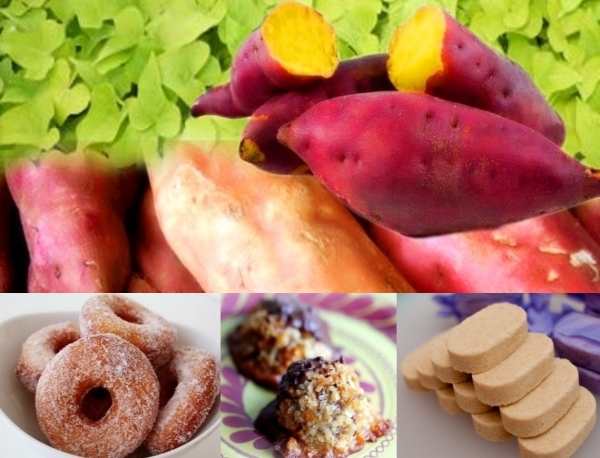

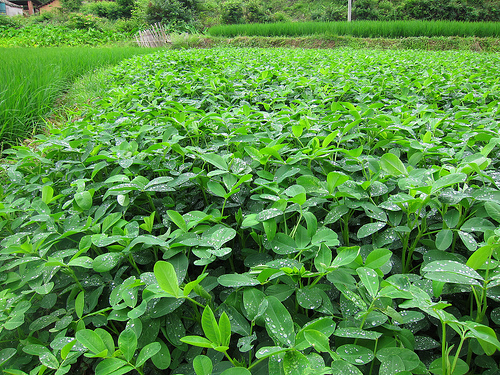 Photo by
Photo by 